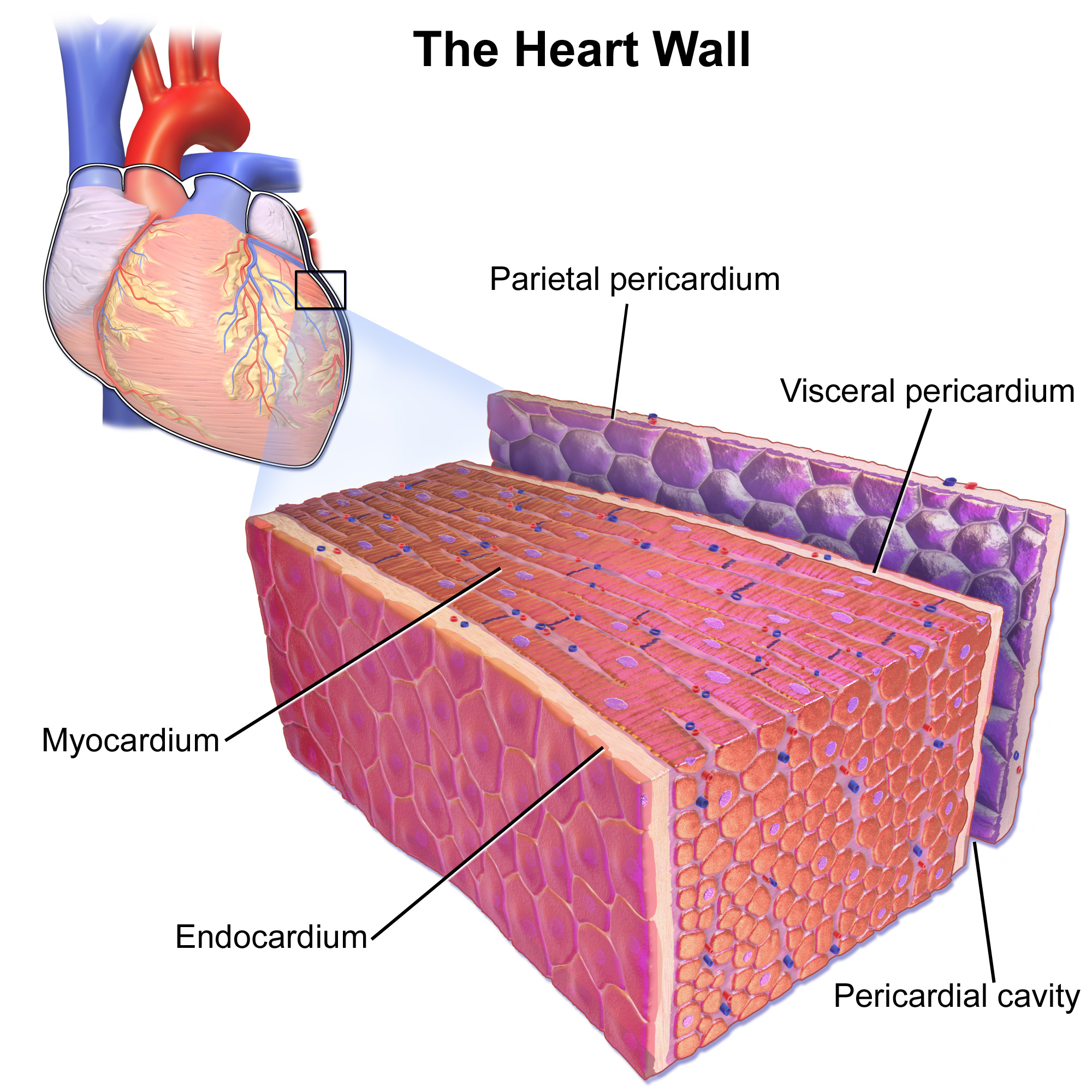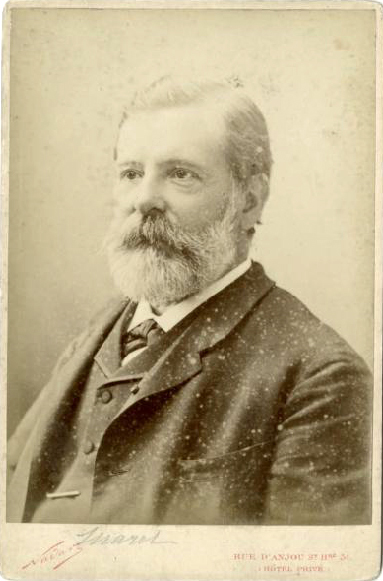|
Joseph Honoré Simon Beau
Joseph HonorĂ© Simon Beau (8 May 1806 in Collonges, department of Ain – 11 August 1865) was a French physician, who is famous for his investigations of the physiology of the heart and the lungs. In 1836 he obtained his doctorate in Paris with the thesis ''De l’emploi des Ă©vacuants'', etc. From 1840 he was an assigned as a physician to the "Bureau central", earning his agrĂ©gation several years later (1844). In July 1856 he became a member of the AcadĂ©mie Nationale de MĂ©decine. He was a leading advocate of pathological physiology. Treatises involving his studies of the heart and lungs were initially published in the ''Archives gĂ©nĂ©rales de mĂ©decine'' (1834 to 1845), and compiled in his ''TraitĂ© expĂ©rimental et clinique d'auscultation appliquĂ© Ă l'Ă©tude des maladies du poumon et du coeur'' (1856). Selected writings * ''TraitĂ© expĂ©rimental et clinique d'auscultation, appliquĂ©e Ă l'Ă©tude des maladies du poumon et du coeur'', 1856 – Treatise on experiment ... [...More Info...] [...Related Items...] OR: [Wikipedia] [Google] [Baidu] |
Auguste Chauveau
Jean-Baptiste "Auguste" Chauveau ForMemRS (23 November 1827 – 4 January 1917) was a French professor and veterinarian. Life Born in Villeneuve-la-Guyard, he received his education at the École nationale vétérinaire d'Alfort and the École Nationale Vétérinaire de Lyon. At the age of 21 he joined the staff at the latter institution, where in 1875 he became the school's director. In 1886, he was appointed professor of comparative pathology at the Muséum national d'histoire naturelle in Paris. Throughout his career Chauveau conducted investigations in the fields of microbiology, virology, biochemistry, muscle thermodynamics and cardiology. With Étienne-Jules Marey (1830–1904), he performed important studies involving the different phases of the cardiac cycle and intracardiac pressure. In 1867 he made decisive experiments on the transmission of tuberculosis and his work affected public health regulations. He had a role in the invention of cardiac catheterization. He ... [...More Info...] [...Related Items...] OR: [Wikipedia] [Google] [Baidu] |
1865 Deaths
Events January–March * January 4 – The New York Stock Exchange opens its first permanent headquarters at 10-12 Broad near Wall Street, in New York City. * January 13 – American Civil War : Second Battle of Fort Fisher: United States forces launch a major amphibious assault against the last seaport held by the Confederates, Fort Fisher, North Carolina. * January 15 – American Civil War: United States forces capture Fort Fisher. * January 31 ** The Thirteenth Amendment to the United States Constitution (conditional prohibition of slavery and involuntary servitude) passes narrowly, in the House of Representatives. ** American Civil War: Confederate General Robert E. Lee becomes general-in-chief. * February ** American Civil War: Columbia, South Carolina burns, as Confederate forces flee from advancing Union forces. * February 3 – American Civil War : Hampton Roads Conference: Union and Confederate leaders discuss peace terms. * Febru ... [...More Info...] [...Related Items...] OR: [Wikipedia] [Google] [Baidu] |
1806 Births
Eighteen or 18 may refer to: * 18 (number), the natural number following 17 and preceding 19 * one of the years 18 BC, AD 18, 1918, 2018 Film, television and entertainment * ''18'' (film), a 1993 Taiwanese experimental film based on the short story ''God's Dice'' * ''Eighteen'' (film), a 2005 Canadian dramatic feature film * 18 (British Board of Film Classification), a film rating in the United Kingdom, also used in Ireland by the Irish Film Classification Office * 18 (''Dragon Ball''), a character in the ''Dragon Ball'' franchise * "Eighteen", a 2006 episode of the animated television series '' 12 oz. Mouse'' Music Albums * ''18'' (Moby album), 2002 * ''18'' (Nana Kitade album), 2005 * '' 18...'', 2009 debut album by G.E.M. Songs * "18" (5 Seconds of Summer song), from their 2014 eponymous debut album * "18" (One Direction song), from their 2014 studio album ''Four'' * "18", by Anarbor from their 2013 studio album ''Burnout'' * "I'm Eighteen", by Alice Cooper commo ... [...More Info...] [...Related Items...] OR: [Wikipedia] [Google] [Baidu] |
Systole (medicine)
Systole ( ) is the part of the cardiac cycle during which some chambers of the heart contract after refilling with blood. The term originates, via New Latin, from Ancient Greek (''sustolē''), from (''sustéllein'' 'to contract'; from ''sun'' 'together' + ''stéllein'' 'to send'), and is similar to the use of the English term ''to squeeze''. The mammalian heart has four chambers: the left atrium above the left ventricle (lighter pink, see graphic), which two are connected through the mitral (or bicuspid) valve; and the right atrium above the right ventricle (lighter blue), connected through the tricuspid valve. The atria are the receiving blood chambers for the circulation of blood and the ventricles are the discharging chambers. In late ventricular diastole, the atrial chambers contract and send blood to the larger, lower ventricle chambers. This flow fills the ventricles with blood, and the resulting pressure closes the valves to the atria. The ventricles now perfo ... [...More Info...] [...Related Items...] OR: [Wikipedia] [Google] [Baidu] |
Myocardial
Cardiac muscle (also called heart muscle, myocardium, cardiomyocytes and cardiac myocytes) is one of three types of vertebrate muscle tissues, with the other two being skeletal muscle and smooth muscle. It is an involuntary, striated muscle that constitutes the main tissue of the wall of the heart. The cardiac muscle (myocardium) forms a thick middle layer between the outer layer of the heart wall (the pericardium) and the inner layer (the endocardium), with blood supplied via the coronary circulation. It is composed of individual cardiac muscle cells joined by intercalated discs, and encased by collagen fibers and other substances that form the extracellular matrix. Cardiac muscle contracts in a similar manner to skeletal muscle, although with some important differences. Electrical stimulation in the form of a cardiac action potential triggers the release of calcium from the cell's internal calcium store, the sarcoplasmic reticulum. The rise in calcium causes the cell's m ... [...More Info...] [...Related Items...] OR: [Wikipedia] [Google] [Baidu] |
Beau's Syndrome
Asystole (New Latin, from Greek privative a "not, without" + ''systolē'' "contraction") is the absence of ventricular contractions in the context of a lethal heart arrhythmia (in contrast to an induced asystole on a cooled patient on a heart-lung machine and general anesthesia during surgery necessitating stopping the heart). Asystole is the most serious form of cardiac arrest and is usually irreversible. Also referred to as cardiac flatline, asystole is the state of total cessation of electrical activity from the heart, which means no tissue contraction from the heart muscle and therefore no blood flow to the rest of the body. Asystole should not be confused with very brief pauses in the heart's electrical activity—even those that produce a temporary flatline—that can occur in certain less severe abnormal rhythms. Asystole is different from very fine occurrences of ventricular fibrillation, though both have a poor prognosis, and untreated fine VF will lead to asystole. Fault ... [...More Info...] [...Related Items...] OR: [Wikipedia] [Google] [Baidu] |
Systemic Disease
A systemic disease is one that affects a number of organs and tissues, or affects the body as a whole. Examples * Mastocytosis, including mast cell activation syndrome and eosinophilic esophagitis * Chronic fatigue syndrome * Systemic vasculitis e.g. SLE, PAN * Sarcoidosis – a disease that mainly affects the lungs, brain, joints and eyes, found most often in young African-American women. * Hypothyroidism – where the thyroid gland produces too little thyroid hormones. * Diabetes mellitus – an imbalance in blood glucose (sugar) levels. * Fibromyalgia * Adrenal insufficiency – where the adrenal glands don't produce enough steroid hormones * Coeliac disease – an autoimmune disease triggered by gluten consumption, which may involve several organs and cause a variety of symptoms, or be completely asymptomatic. * Ulcerative colitis – an inflammatory bowel disease * Crohn's disease – an inflammatory bowel disease * Hypertension (high blood pressure) * Metab ... [...More Info...] [...Related Items...] OR: [Wikipedia] [Google] [Baidu] |
Nail Plate
A nail is a claw-like plate found at the tip of the fingers and toes on most primates. Nails correspond to the claws found in other animals. Fingernails and toenails are made of a tough protective protein called alpha-keratin, which is a polymer. Alpha-keratin is found in the hooves, claws, and horns of vertebrates. Structure The nail consists of the nail plate, the nail matrix and the nail bed below it, and the grooves surrounding it. Parts of the nail The matrix, sometimes called the ''matrix unguis'', keratogenous membrane, nail matrix, or onychostroma, is the active tissue (or germinal matrix) that generates cells, which harden as they move outward from the nail root to the nail plate. It is the part of the nail bed that is beneath the nail and contains nerves, lymph and blood vessels. The matrix produces cells that become the nail plate. The width and thickness of the nail plate is determined by the size, length, and thickness of the matrix, while the shape of the fin ... [...More Info...] [...Related Items...] OR: [Wikipedia] [Google] [Baidu] |
Beau's Lines
Beau's lines are deep grooved lines that run from side to side on the fingernail or the toenail. They may look like indentations or ridges in the nail plate.Freedberg, et al. (2003). ''Fitzpatrick's Dermatology in General Medicine''. (6th ed.). McGraw-Hill. . This condition of the nail was named by a French physician, Joseph Honoré Simon Beau (1806–1865), who first described it in 1846. Signs and symptoms Beau's lines are horizontal, going across the nailline, and should not be confused with vertical ridges going from the bottom ( cuticle) of the nail out to the fingertip. These vertical lines are usually a natural consequence of aging and are harmless. Beau's lines should also be distinguished from Muehrcke's lines of the fingernails. While Beau's lines are actual ridges and indentations in the nail plate, Muehrcke lines are areas of hypopigmentation without palpable ridges; they affect the underlying nail bed, and not the nail itself. Beau's lines should also be dist ... [...More Info...] [...Related Items...] OR: [Wikipedia] [Google] [Baidu] |
Dyspepsia
Indigestion, also known as dyspepsia or upset stomach, is a condition of impaired digestion. Symptoms may include upper abdominal fullness, heartburn, nausea, belching, or upper abdominal pain. People may also experience feeling full earlier than expected when eating. Indigestion is relatively common, affecting 20% of people at some point during their life, and is frequently caused by gastroesophageal reflux disease (GERD) or gastritis. Indigestion is subcategorized as "organic" or "functional", but making the diagnosis can prove challenging for physicians. Organic indigestion is the result of an underlying disease, such as gastritis, peptic ulcer disease (an ulcer of the stomach or duodenum), or cancer. Functional indigestion (previously called nonulcer dyspepsia) is indigestion without evidence of underlying disease. Functional indigestion is estimated to affect about 15% of the general population in western countries and accounts for a majority of dyspepsia cases. In eld ... [...More Info...] [...Related Items...] OR: [Wikipedia] [Google] [Baidu] |
Étienne-Jules Marey
Étienne-Jules Marey (; 5 March 1830, Beaune, Côte-d'Or – 15 May 1904, Paris) was a French scientist, physiologist and chronophotographer. His work was significant in the development of cardiology, physical instrumentation, aviation, cinematography and the science of laboratory photography. He is widely considered to be a pioneer of photography and an influential pioneer of the history of cinema. He was also a pioneer in establishing a variety of graphical techniques for the display and interpretation of quantitative data from physiological measurement. Biography Marey started by studying blood circulation in the human body. Then he shifted to analyzing heart beats, respiration, muscles (myography), and movement of the body. To aid his studies he developed many instruments for precise measurements. For example, in 1859, in collaboration with the physiologist Auguste Chauveau and the watch manufacturer Breguet, he developed a wearable '' Sphygmograph'' to measure the ... [...More Info...] [...Related Items...] OR: [Wikipedia] [Google] [Baidu] |





